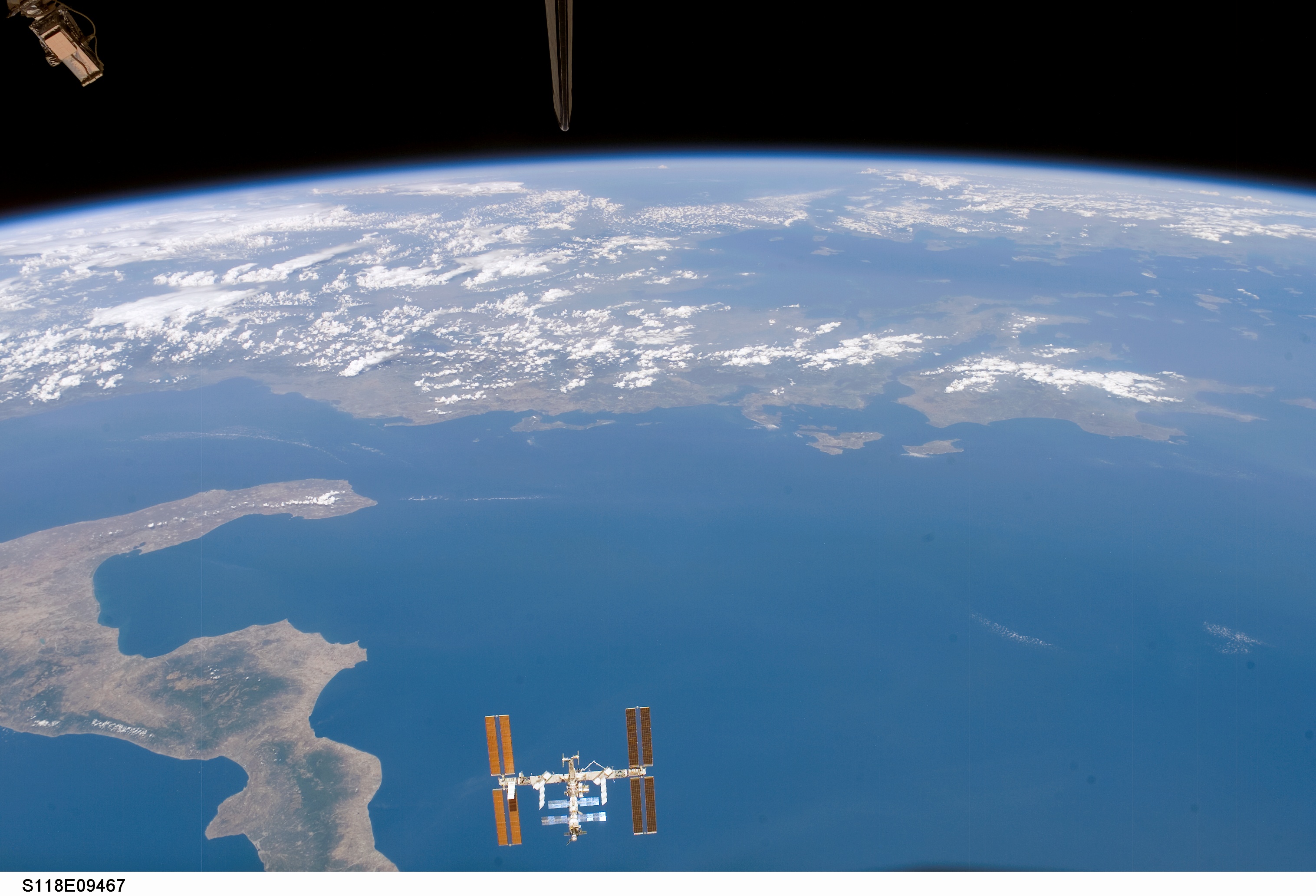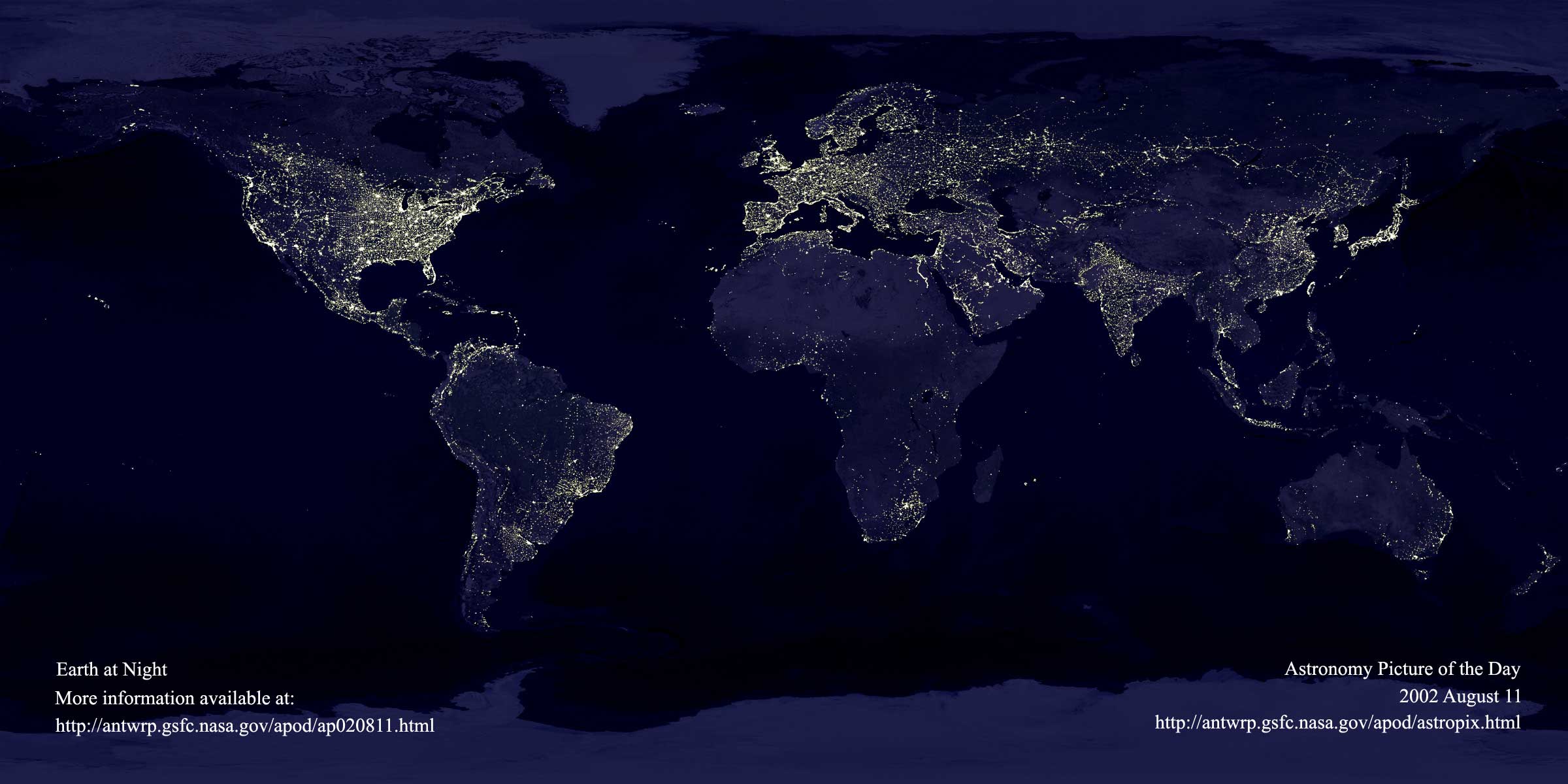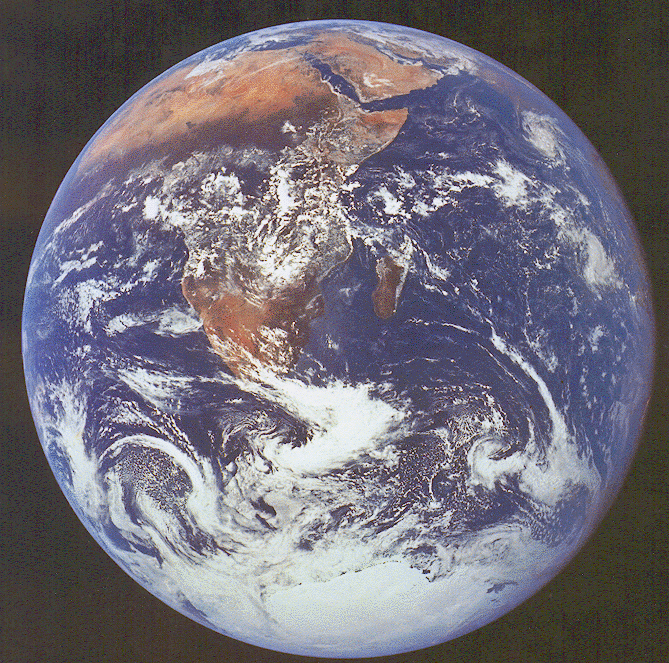Earthrise 1966 - The World's First View of Earth Released to the Public
First Image of the Earth from the Moon
APOD,
Earthobservatory.nasa.gov
Moffett Field, Calif. -- NASA released a newly restored 42-year-old image of Earth on Thursday. The Lunar Orbiter 1 spacecraft took the
iconic photograph of Earth rising above the lunar surface in 1966. Using refurbished machinery and modern digital technology, NASA produced the
image at a much higher resolution than was possible when it was originally taken. The data may help the next generation of explorers as NASA
prepares to return to the Moon.
The world's first view of Earth released to the public was taken by a spacecraft from the vicinity of the Moon. The photo was transmitted to
Earth by the U.S. Lunar Orbiter I and received at the NASA tracking station at Robledo De Chavela near Madrid, Spain. This crescent of the
Earth was photographed August 23, 1966 at 16:35 (GMT) when the spacecraft was on its 16th orbit and just about to pass behind the Moon
In the late 1960s, NASA sent five Lunar Orbiter missions to photograph the surface of the moon and gain a better understanding of the lunar
environment in advance of the Apollo program. Data were recorded on large magnetic tapes and transferred to photographic film for scientific
analysis. When these images were first retrieved from lunar orbit, only a portion of their true resolution was available because of the limited
technology available. » NASA:
The world's first view of Earth » Photo Credit:
NASA/LOIRP »
Earthrise Photo made by the Apollo 8 Crew


» APOD:
Moonquakes Surprisingly Common » Photo Credit:
Neil Armstrong, the
Apollo 11 Crew,
GRIN,
NASA
Why are there so many moonquakes? A recent reanalysis of
seismometers left on the moon by the
Apollo moon landings has revealed a surprising number
of moonquakes occurring within 30 kilometers of the surface. In fact,
28 moonquakes were detected in data recorded between 1972 and 1977.
These moonquakes were not only strong enough to move
furniture but the stiff rock of the moon continued vibrating for many minutes, significantly longer
than the soft rock
earthquakes on
Earth. The cause of the moonquakes remains unknown, with one hypothesis holding that
landslides in craters cause
the vibrations. Regardless of the source,
future moon buildings need to be built to withstand the frequent shakings.
Pictured above in 1969, Apollo 11
astronaut
Buzz Aldrin stands besides a recently deployed
lunar seismometer, looking back toward the lunar landing module.
• Lunar
Laser Ranging Equipment • Apollo
11/
14/
15, KSC Apollo
11/
14/
15,
FESG • Lunar
Apache Point Laser-ranging Operation



 » Web Search: Images of the International Space Station
» Web Search: Images of the International Space Station




 On the Moon
On the Moon On Earth
On Earth On the Moon
On the Moon Earth viewed by Apollo 11 Crew
Earth viewed by Apollo 11 Crew